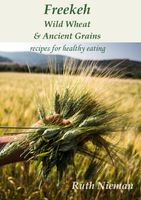Label
All
0
Clear all filters
🍜 Check out our Noodle bookshelf, and save 25% on ckbk Premium Membership 🍜
Lost crops
Appears in
By Ruth Nieman
Published 2021

The Near East and Fertile Crescent are regarded by archaeologists, agronomists and culinary historians as the birthplace of agriculture, from which the roots of so many lost or forgotten crops originate. Wild wheats, barley, rye and millet link to our historic and biblical ancestry, widely referenced from as early as the Neolithic era (9000–3000 BCE) and in the numerous books of the Old Testament. These wild grains would be subsequently abandoned in favour of high yielding, cultivated grains. The lost crops connect the land with its natural heritage, having played a vital role in agricultural history, trade and food chains, fusing the culinary connection from our ancient past to the future of sustainable eating. As traditional methods of farming from the Neolithic age were abandoned, strains of wild wheats and ancient cereals disappeared for centuries.
In this section
Advertisement
Advertisement


